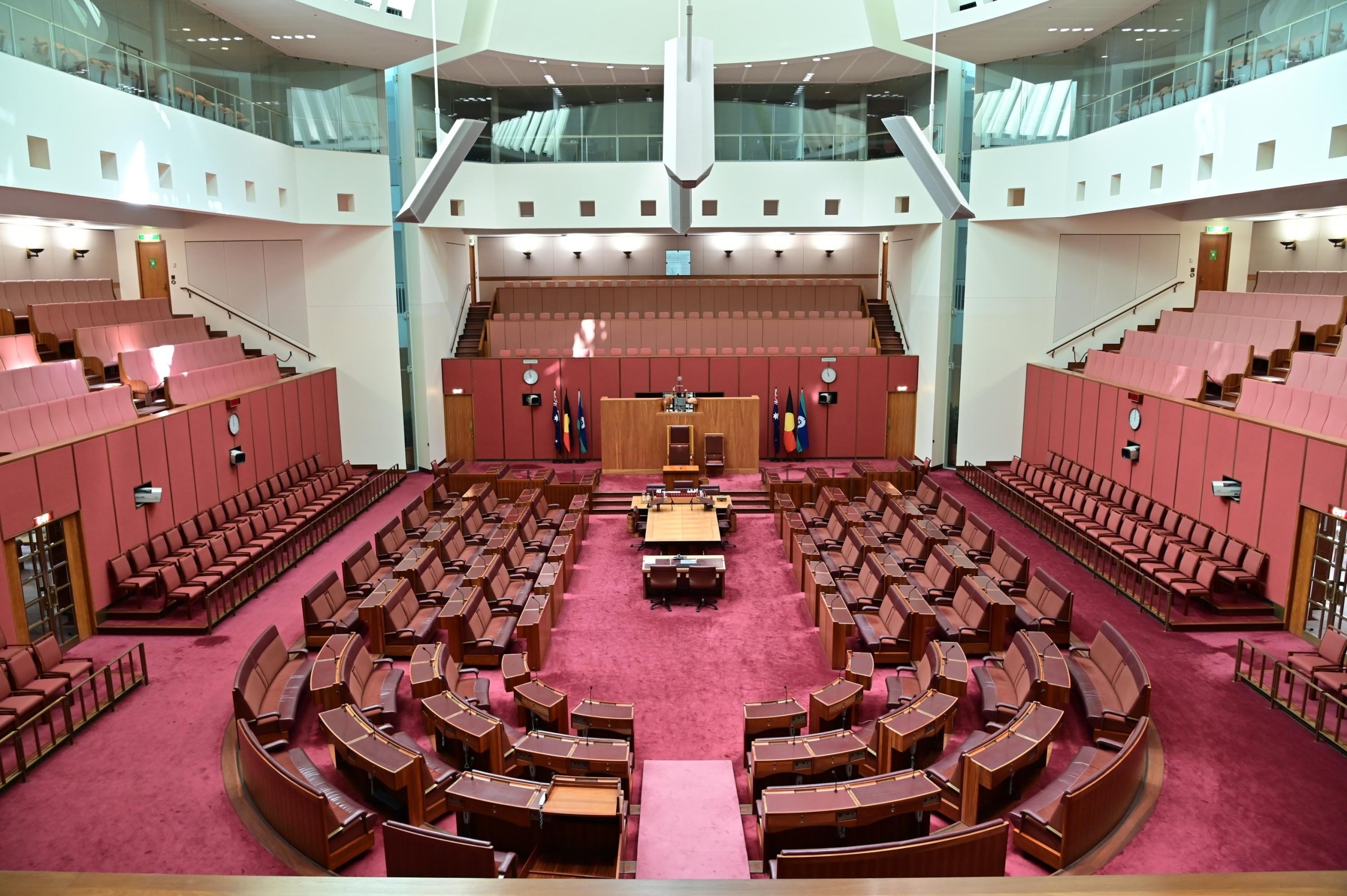The Inside Word

Red wave trickles into the Senate
The red wave that washed through the House of Representatives on Saturday also trickled into the Senate.
Bear with me a moment, as I’m a dork for the Senate and have been since I was a child (my mother must have dropped me on my head as a baby).
As the House of Review, the Senate is made up of 76 senators, twelve from each of the six states and two from each of the mainland territories. It shares the power to make laws with the House of Representatives. Senators are elected for six-year terms, with approximately half of the Senate up for re-election at each federal poll.
Senators are elected by proportional representation with preferences. A quota in a state is one-seventh of the vote, or 14.3%. In the territories, it’s one-third or 33.3%. A single quota equates to an elected senator.
With that bit of background, here is the state of play in the Australian Senate after the 2025 Federal Election.
With 43.8 per cent counted at the time of writing, one thing is clear about the composition of the next Senate: Labor is likely to pick up three senators from the Coalition, enabling it to pass legislation with the support of the Greens only. This means Labor may not need the support of other members of the crossbench. The Left, broadly defined, will likely control the Senate for this term of Parliament.
While the influence of the Greens in the House has diminished since Sunday, they now hold sway over the government’s agenda in the Senate. This is also an opportunity for the Greens to refocus on matters of the environment in collaboration with the government, distinct from the widening of its political agenda in recent years. How the Greens play in the sandpit, as collaborators or obstructionists, may also determine the extent to which they can claw back influence in the future.
Of the 76 senators in the upper house, Labor and the Greens together look likely to hold the 39 votes required to pass legislation. If, as some commentators have remarked, Labor does not get there with another NSW Senator, the Prime Minister will have sympathetic compatriots in crossbench senators: Independent David Pocock, former Greens Senator Lidia Thorpe and former Labor Senator Fatima Payman.
There will also be pieces of legislation where the Coalition is more amenable, like tax reform or defence spending, but, for the most part, the Prime Minister can be confident his agenda will make its way through the Senate with the support of the Greens.
This is how the Senate looks at the time of writing.
In my home state of Queensland, Labor has 2.1 quotas, the Liberal National Party 1.9, the Greens 0.8, One Nation 0.49 and former LNP Senator Gerard Rennick 0.35.
One Nation is the favourite to win the sixth seat. Labor looks to hold two spots, LNP two, one for the Greens and one to One Nation.
In NSW, Labor has 2.6 quotas, the Coalition 1.9, the Greens 0.9 and One Nation 0.4. Labor looks likely to win three seats on current primaries, leaving the NSW totals: three Labor, two Liberals and one to the Greens.
In Victoria, Labor has 2.4 quotas, the Coalition 2, the Greens 0.98, One Nation 0.31 and Legalise Cannabis 0.29. At the time of writing, Labor is ahead on a third spot, but with preference flows, that’s not yet certain. Final Victorian numbers may be: two Labor, two Liberals, one to the Greens and perhaps one for One Nation or Labor.
In Western Australia, Labor has 2.4 quotas, the Liberals 1.7, the Greens 1.04, One Nation 0.4, Legalise Cannabis 0.33 and the Nationals 0.25. In the west, results look to be: two Labor, two Liberal, one to the Greens, with Labor favoured to pick up the sixth seat.
In SA, Labor has 2.6 quotas, the Liberals 1.8, the Greens 1.0 and One Nation 0.36. Labor and the Greens are likely to win four of the state’s six Senate spots, with the Liberals picking up two.
In Tasmania, Labor has 2.4 quotas, the Liberals 1.5, the Greens 1.2, Jacqui Lambie 0.5, One Nation 0.4 and Legalise Cannabis 0.3. While Labor will pick up two spots, and the Liberals and Greens are set to pick up one each, the final spot is harder to predict. Jacqui Lambie is ahead at the time of writing, but preferences may not favour the outspoken Tasmanian.
In the ACT, Pocock has been easily re-elected with 1.3 quotas, and Katy Gallagher will secure the second for Labor.
And finally, Labor and the Country Liberals will win a seat each in the Northern Territory.
There was no huge change in the Senate, but enough that Labor can openly pursue its agenda. Like the House of Representatives, the Liberal and National parties have work to do on their Senate representation.
Navigating all this will require authentic relationships and a deep understanding of the workings of Canberra. Several members of the SAS Group’s non-partisan team have first-hand experience in the Senate and would welcome the opportunity to support you and your organisation. Give us a call!


